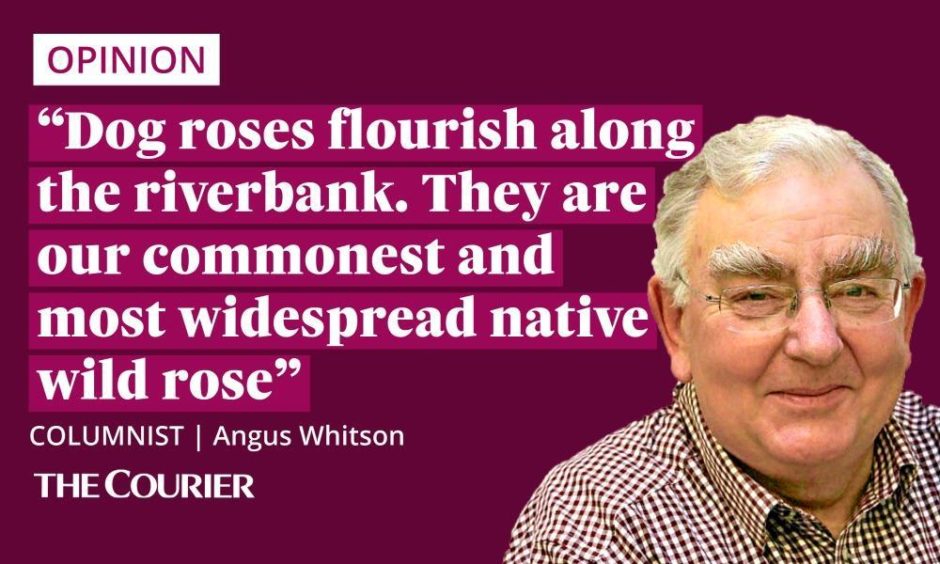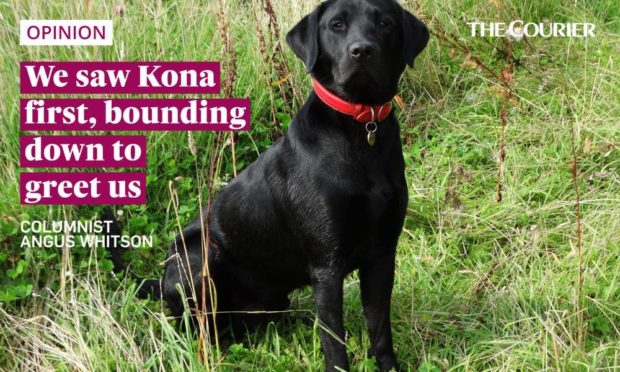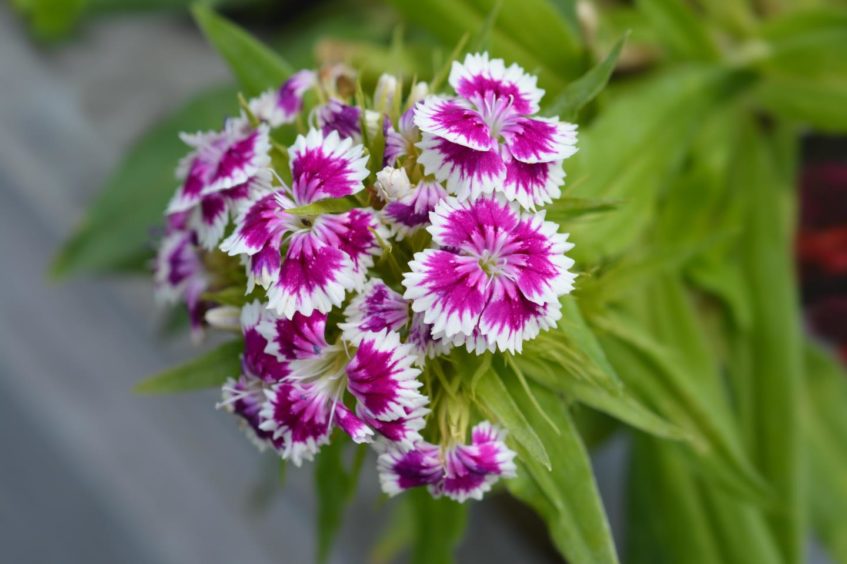A new flower appeared in the back lawn, just a single stem with three orangey-red flower heads, but one I didn’t recognise.
I took great care to cut round it when I mowed the grass.
Grass cut, I reached for Mary McMurtrie’s Scottish Wild Flowers and after a couple of false starts, for it is listed in the yellow flower section, I tracked it down.
It is orange hawkweed, a cousin of yellow hawkweed, and is described as a garden escapee which has spread extensively in the wild.
It flowers in July and August and is commonly found on roadsides and waste ground.
Waste ground, indeed – after all my energetic mowing and the finely manicured lawn I didn’t take too kindly to that description.

On a dog walk with Inka up the bank of the River North Esk a single yellow flower with lance shaped leaves gleamed out from the undergrowth.
It was yellow loosestrife which has five-petalled starry flowers with an orangey-red centre.
A step or two further on the berries on a solitary guelder rose at the side of the track are ripening to deep pink.
It’s not a rose bush but a small deciduous tree usually found in the woodland margins.
It’s the same family as honeysuckle and the leaves turn deep pink and wither before the berries finally shrivel and die.
Days of wine and dog roses
Dog roses flourish along the riverbank. They are our commonest and most widespread native wild rose producing delicate white and varying shades of pink flowers.
The flowers are all gone now and the autumn harvest of bright red hips – the wild roses’ seed pods – will be a welcome source of winter food for the birds.
They are a source of vitamin C and can be made into healthy syrups and jellies.
For a while my father was a near fanatical amateur wine maker and my sister and I were sent out to pick basket loads of rosehips which he made into wine.
The seeds inside the hips are covered in fine, tickly hairs and it used to be tremendous fun to slip them down the back of the necks of your school mates instead of itching powder from Mrs Pert’s Trick Shop in New Wynd, Montrose – how many Montrose readers a bit smooth in the tooth remember that?
Bairns’ games
Do bairns still play sodgers with Carl Doddies, the ribwort plantain weed with brown, spiked head resembling an arrowhead on a stiff leafless stalk?
Two kids stand face to face, each trying to knock off their opponent’s flower head.
The name Carl Doddies goes back to 1746 and the Battle of Culloden when, you’ll remember, Bonnie Prince Charlie fatally challenged King George II for restoration of the House of Stuart to the British throne.
Carl is our Scottish diminutive for Charlie – Bonnie Prince Charlie.
Doddie is the diminutive for George – King George II.
In less than an hour the flower of the prince’s Highland army were comprehensively defeated and scattered by a vastly superior and well-disciplined Hanoverian army under the command of the king’s son, William Augustus, Duke of Cumberland.
After Culloden the English honoured William Augustus by naming the Sweet William flower in recognition of his great victory.
The Jacobite response to this horticultural flattery was to rename the rank smelling and noxious weed, common ragwort, calling it “Stinking Willie”.
Still on the military theme look out for soldier’s blood, the tall brown stems of the perennial common sorrel which grows on uncultivated ground.
Its small blood-red flowers have died away to rusty coloured seeds which could be taken for a splash of a fallen soldier’s blood.
Scottish soldiers have fought in major and minor conflicts all over the world but the battlegrounds of World War One claimed the lives of more Scots than any before or after.
I shouldn’t be surprised if the battlefields of the Somme or Passchendaele were the origin of the weed’s nickname.
One dog and his man
You never know who you will meet round the next corner and it’s always worth stopping to talk and find out what they are up to.
We saw Kona the dog first, bounding down to greet us.
He’s the canine field assistant of Stuart Greig, a hydrologist with SEPA – Scottish Environment Protection Agency – whose role is to protect and improve our environment and contribute to sustainable economic growth.
Ideals close to my heart.
Stuart was working in the small wooden recording station by the riverside which collects information on rainfall and floodwater threats.
Using a sophisticated piece of kit called an Acoustic Doppler Current Profiler he measures the flow and quantity of water coming down the river which is essential information when the river level is high and there is a danger of flooding.
Kona is a good looking Labrador Retriever.
Not yet two years old he has a broad, handsome head and Stuart must hope he has stopped growing for he’s a chunky boy and will have an appetite to go with it.
MAN WITH TWO DOGS: On the shale bings new life springs from old industries

